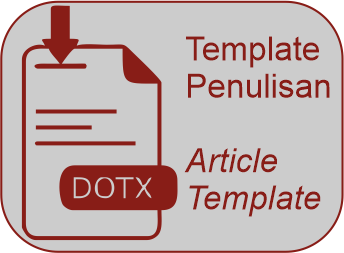Strategi Pengembangan Pulau Libukang Sebagai Obyek Wisata Kota Palopo Provinsi Sulawesi Selatan
DOI:
https://doi.org/10.35965/jups.v5i1.192Kata Kunci:
Strategy, Development, Sightseeing, Libukang IslandAbstrak
Tujuan dari penelitian ini adalah untuk mengenali faktor yang mempengaruhi pengembangan Obyek Wisata Pulau Libukang Kota Palopo. Serta untuk mengetahui strategi pengembangan Obyek Wisata Pulau Libukang Kota Palopo. Penelitian ini merupakan penelitian lapangan dengan metode pengumpulan datanya melalui survey dan dokumentasi, dengan metode pendekatan kualitatif dan kuantitatif. Analisis yang digunakan dalam penelitian ini ialah menggunakan analisis Chi-Square dan Analisis SWOT. Hasil uji Chi-Square diperoleh dua faktor yang berpengaruh signifikan terhadap pengembangan Pulau Libukang sebagai Obyek Wisata yaitu Objek Daya Tarik dan Aksesibilitas. Strategi Pengembangan Pulau Libukang sebagai Obyek Wisata yaitu dengan Mensosialisasikan terkait RTRW Kota Palopo, Peningkatan kontribusi pariwisata terhadap kualitas dan kuantitas sumber daya manusia, Mendukung visi misi RIPPARDA serta menjadikannya acuan/pedoman dalam pengembangan obyek wisata. Meningkatkan daya tarik dengan membangun dan melengkapi fasilitas penunjang guna menarik minat wisatawan berkunjung ke Pulau Libukang serta menyebarluaskan informasi obyek wisata dengan memanfaatkan teknologi informasi.
Referensi
Aulia, R., Pratama, M. Y., & Utama, A. (2022). Strengthening local tourism governance through participatory planning: A case from Indonesia. Journal of Sustainable Tourism Development, 30(4), 512–527.
Cooper, C., Fletcher, J., Gilbert, D., Wanhill, S., & Shepherd, R. (1998). Tourism: Principles and practice (2nd ed.). Longman.
Sunaryo, B. (2013). Kebijakan pembangunan destinasi pariwisata: Konsep dan aplikasinya di Indonesia. Gadjah Mada University Press.)
Fadli, M. R., Salam, R., & Darwis, M. (2022). Local-based ecotourism development and community empowerment in coastal areas of Indonesia. Ocean & Coastal Management, 225, 106260.
Fitriani, L., & Lim, K. G. (2020). Disparity in tourism infrastructure development in Indonesia: Regional analysis using spatial econometrics. Tourism Economics, 26(5), 919–937.
Kurnianingsih, H., Nuraini, S., & Widodo, T. (2022). Sustainable tourism planning: Integrating local wisdom and community participation. Journal of Regional and City Planning, 33(2), 127–143.
Musdah, M., Lestari, N. P., & Asrul, A. (2022). Infrastructure challenges in the development of rural tourism destinations in Indonesia. GeoJournal of Tourism and Geosites, 41(2), 438–446.
Permatasari, D. (2022). Evaluating the tourism components in sustainable development: The Indonesian experience. Environment, Development and Sustainability, 24, 10312–10331.
Suhandi, R., Yuliana, S., & Ramadhan, A. (2022). Collaborative governance in tourism development: Empirical insights from West Java, Indonesia. Asia Pacific Journal of Tourism Research, 27(6), 617–633.
Undang-Undang Republik Indonesia Nomor 10 Tahun 2009 tentang Kepariwisataan.
Peraturan Daerah (Perda) Kota Palopo Nomor 9 Tahun 2012 tentang Rencana Tata Ruang Wilayah Kota Palopo Tahun 2012–2032.
Wibowo, H., & Darsono, D. (2022). Analisis potensi dan tantangan pengembangan wisata bahari di daerah terpencil: Studi kasus Pulau Libukang. Jurnal Kepariwisataan Indonesia, 16(1), 35–48.
##submission.downloads##
Diterbitkan
Cara Mengutip
Terbitan
Bagian
Lisensi
Hak Cipta (c) 2025 Utami Wulandari, Kamran Aksa, Jufriadi

Artikel ini berlisensi Creative Commons Attribution 4.0 International License.













